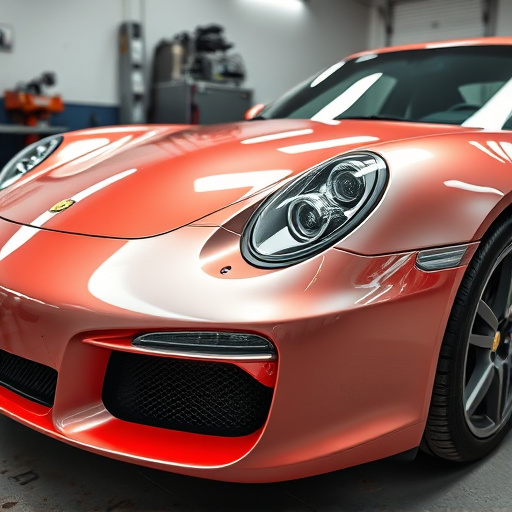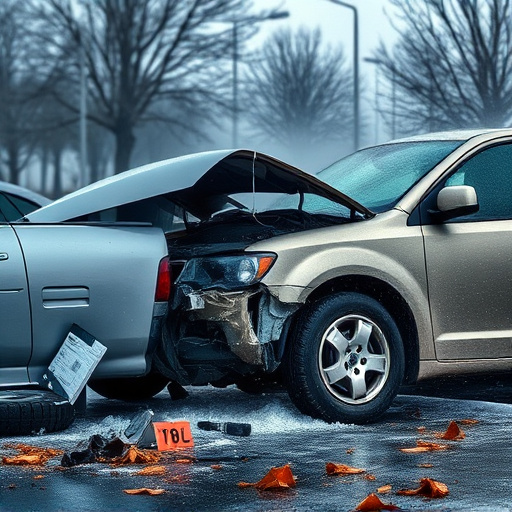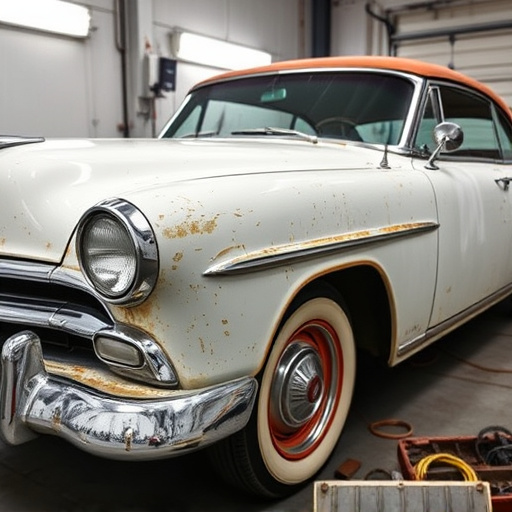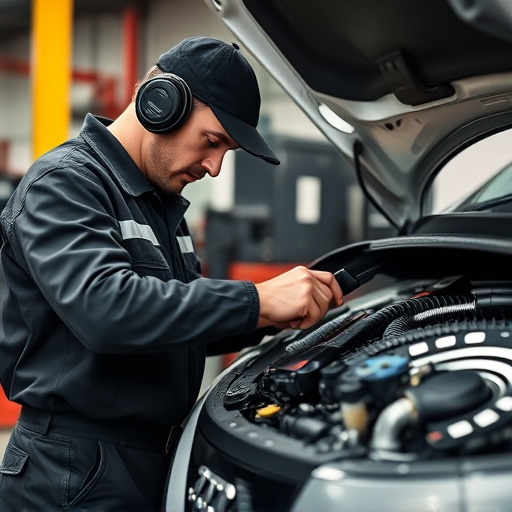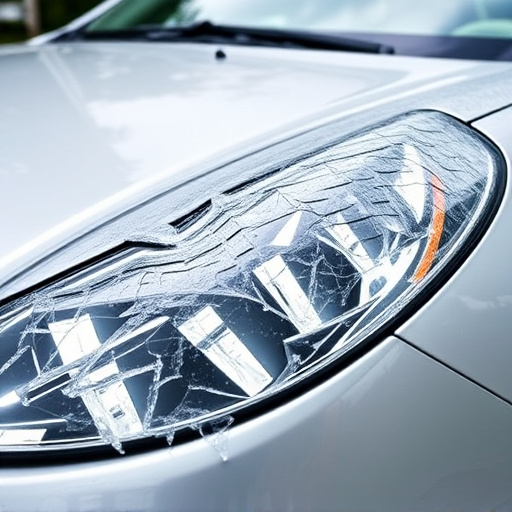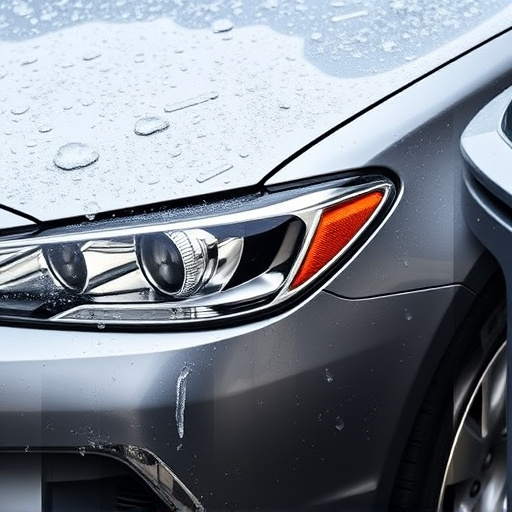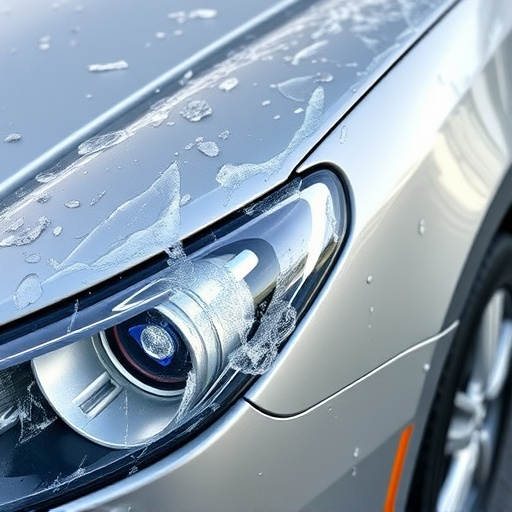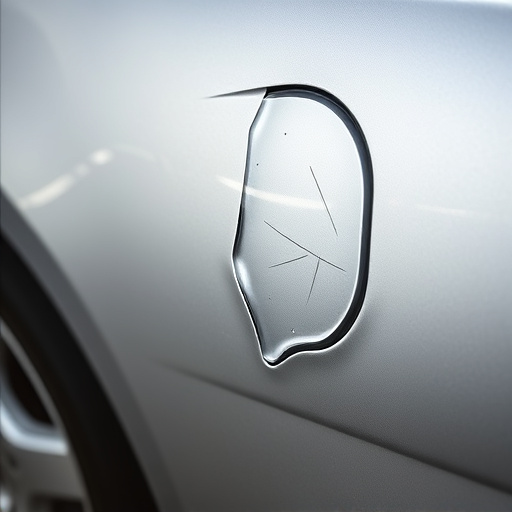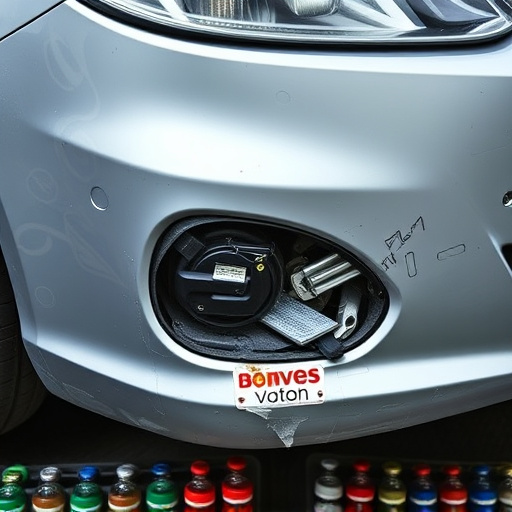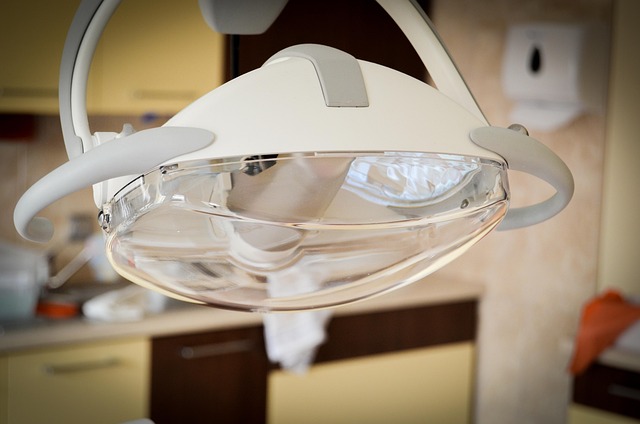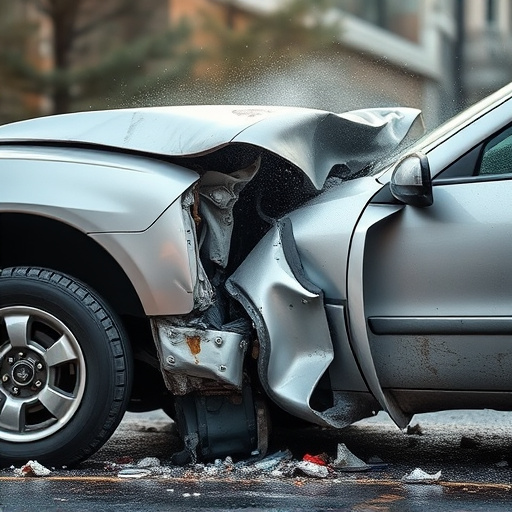The color spectrophotometer is a revolutionary tool in auto body repair, objectively measuring paint reflectance and transmittance across wavelengths to ensure accurate, consistent color matching. It overcomes human subjectivity and errors in traditional manual methods, providing precise data for high-quality repairs, especially in classic car restoration where historical accuracy is crucial.
In the realm of paint matching, the choice between traditional manual techniques and modern technology like the color spectrophotometer is paramount for achieving precise results. While manual methods have long been relied upon, spectrophotometers offer a revolutionary approach with unparalleled accuracy. This article delves into the world of these advanced tools, exploring how color spectrophotometers ensure consistent, objective measurements, while also examining the limitations of conventional manual paint matching techniques.
- Understanding Color Spectrophotometer: Precision Measurement Tool
- Manual Paint Matching: Traditional Techniques and Limitations
- Comparing Accuracy: Spectrophotometer vs. Human Vision
Understanding Color Spectrophotometer: Precision Measurement Tool

A color spectrophotometer is a precision measurement tool designed to analyze and quantify colors with incredible accuracy. Unlike traditional manual paint matching techniques, which rely on human observation and subjective judgment, this advanced device objectively measures the reflectance and transmittance of light across a wide range of wavelengths. By capturing detailed data about a color’s hue, saturation, and brightness, a spectrophotometer enables precise matching, making it invaluable in industries like automotive repair. For auto body repairs and collision repair services, where maintaining color consistency is paramount to achieving professional results, these instruments play a crucial role in ensuring that vehicles return to their pre-incident aesthetic condition.
In an auto repair shop, the use of a color spectrophotometer streamlines the process of matching paint colors, especially when dealing with complex or hard-to-match shades. Its scientific approach eliminates potential errors introduced by human perception and ensures that each repair is executed with meticulous attention to detail. This not only enhances the overall quality of autobody repairs but also saves time and resources in the long run.
Manual Paint Matching: Traditional Techniques and Limitations
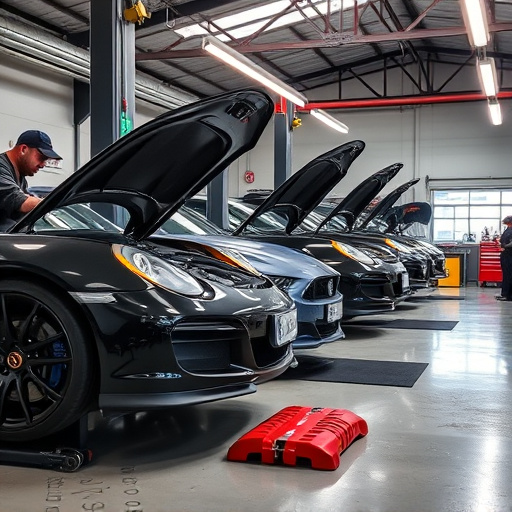
Manual paint matching is a traditional method employed by auto body technicians to ensure precise color coordination during vehicle repairs, particularly in the luxury vehicle repair and fleet repair services sectors. This process involves a series of subjective judgments and visual comparisons. Technicians often rely on their experience and a set of physical samples to match the exact shade. They may start by mixing paints or adjusting existing colors based on their expertise. However, this technique is inherently limited by human perception and the potential for consistent errors.
The subjectivity of manual matching can lead to discrepancies across different technicians, even when using the same paint brand and color name. Environmental factors, lighting conditions, and individual eyesight variations further complicate matters. In the auto body repair domain, where precision is paramount, these limitations can result in noticeable differences, especially with high-quality paints designed for premium vehicles. Thus, many professionals are turning to advanced tools like the color spectrophotometer as a more reliable alternative.
Comparing Accuracy: Spectrophotometer vs. Human Vision
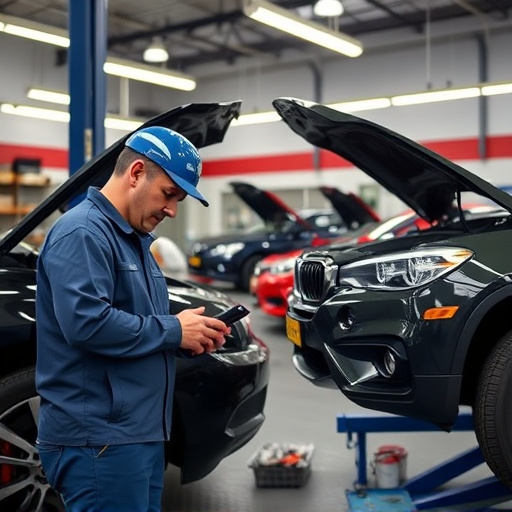
When it comes to color accuracy, a color spectrophotometer offers an objective and scientific approach. These advanced instruments measure light absorption and reflection properties of materials, providing precise color data in a quantitative manner. In contrast, human vision relies on subjective perception, which can vary from person to person. While skilled technicians can match colors with remarkable consistency using manual techniques like visual comparison and touch testing, especially in fields like vehicle restoration and car bodywork, spectrophotometers ensure a more consistent and reproducible result, down to the smallest variations in hue and shade. This is particularly crucial for classic car restoration projects where maintaining historical accuracy is paramount.
In terms of precision, color spectrophotometers are unparalleled. They can detect even subtle differences in color that might be imperceptible to the human eye. By analyzing light at specific wavelengths, these devices capture a complete spectrum of colors, enabling exact matches across various surfaces and conditions. This level of detail ensures that the final match is not just close but an exact replica, making them indispensable tools for professionals in industries like classic car restoration who demand the highest level of color accuracy.
In comparing color spectrophotometers with manual paint matching techniques, it’s evident that technological advancements like the spectrophotometer offer unparalleled precision and efficiency in color measurement. While human vision has long been relied upon for visual comparisons, a color spectrophotometer provides objective data, capturing color characteristics across a spectrum with meticulous accuracy. This modern approach streamlines the process of paint matching, making it faster, more consistent, and reliable—a game-changer for professionals in industries where accurate color reproduction is paramount.

